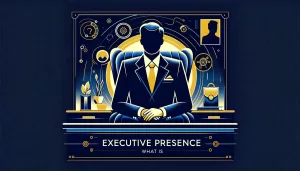If you are wondering how to become a thought leader, you’ve come to the right place.
Step into the arena of influence and expertise with this essential 2025 guide.
A thought leader is someone who others trust to get knowledge, insights, and tools on a particular field of expertise.
So, to become a thought leader, you simply have to develop an audience that follows you for your knowledge and insights.
It is as simple as that.
But it is not easy.
At Latinpresarios, we focus on helping introverted professionals become the go-to thought leaders in their niche.
Also, thousands of people visit our website everything to learn about personal branding and thought leadership.
In this article, I will share with you:
- How to identify the type of thought leader you are
- Setting a goal for the type of thought leader you want to be
- Developing and executing a plan to achieve that goal
Contents
What does a thought leader do?
A thought leader is like a lighthouse in a sea of information.
Just as a lighthouse guides ships through foggy and treacherous waters, a thought leader illuminates the path for others in their field, offering clarity amidst the overwhelming waves of information
It is as simple as that.
The answer can get complex if we take into account the different types of thought leaders.
Because, for example, a scholar is someone who accumulates and expands knowledge in a particular field by conducting research and writing papers to share their findings.
On the other hand, a business expert is someone who accumulates and expands knowledge in a particular field by leading projects and teams.
They also speaks at conferences, podcasts, and publish blogs, whitepapers, or books to share their expertise.
As you can see, the specific activities that each type of thought leader does will be different, but in essence, they are all accumulating and sharing knowledge and insights.
Can anyone be a thought leader?
Is thought leadership a universal key or a special privilege?
Let’s debunk myths and discover the potential in each of us.
The truth is that anyone can be a thought leader.
But not everyone is willing to do what it takes to be a thought leader.
In the case of introverts, they are often potential thought leaders, but they are not taking the necessary steps to share that knowledge.
In other cases, you might already be a thought leader (i.e., your colleagues come to you for professional advice, but it is a small group of people), yet you are not sure about how to get to the next level.
For this reason, the first step you need to take is to assess your current thought leadership status, which can be achieved by conducting a personal branding audit.
This will help you understand who are the current thought leaders in your niche, the topics that are important to the audience in such space, and where you currently stand.
You must first identify the type of thought leader you are and what separates you from becoming the thought leader you’d like to be (in terms of the impact and influence you want to have).
How do you train thought leadership?
Training for thought leadership is like preparing for a marathon – it requires strategy, endurance, and a clear goal.
It’s not just a sprint to the next burst of insight; it requires consistent effort, learning, and reflection.
Each step builds endurance and expertise, bringing you closer to your goal of being a leading voice in your field.
You train thought leadership by taking action, reflecting and thinking about the results you achieved with your actions, and then sharing what you learned in that process.
Again, the specifics will look different depending on your field of knowledge and the type of thought leader you want to become.
It’s important that you set a goal.
Take a look at your field of expertise, assess where you stand in comparison to others who are trusted thought leaders in that space, and then decide:
- Where do you want to be in the next 2-5 years?
- Where would you like to be at the end of your career (which might be until you take your last breath, as it was with Charlie Munger)?
Having both short-term and long-term goals will give you a great perspective to craft an action plan.
After establishing those goals, you can get into the specifics to train your thought leadership muscles.
Your particular thought leadership training regime might look something like this:
- Staying up to date with industry trends
- Working on your POV and interviewing skills to get booked as a guest in top-ranked podcasts in your industry
- Partnering with a ghostwriter to publish thought leadership pieces consistently
- Repurposing all the content you are creating to reach a broader audience through social media channels
- Secure speaking engagements at the right events
How do you become a thought leader and advance your career?
After assessing your current thought leadership status and establishing your thought leadership goals, you need to craft a strategy to achieve these.
It is key to set up key performance indicators for each of the activities that you outline in your plan.
Here are some examples of the type of KPIs we include in the strategies we create for our clients:
- Audience growth (social media followers and monthly readers)
- Influence growth (email subscribers and speaking engagements)
- Recognition growth (platforms, publications, and podcasts that feature you as a guest speaker/contributor)
These are just a few examples of the type of variable you need to track to make sure that your strategy and the monthly execution are taking your career to the next level.
Are you ready to learn how to become a thought leader?
If you are ready to take action to learn what you need to do to become the go-to thought leader in your niche, here’s how I can help you:
If you are still on the information gathering face, you can take a look at all the lists of personal branding experts we have on our website.
If you are ready to take action, you can download some of our free resources to start crafting your personal branding statement and use our personal branding template to assess your current thought leadership status.
If you are ready to invest in yourself, you can book a call with me to brainstorm strategies to help you get to the next level in your thought leadership journey.





